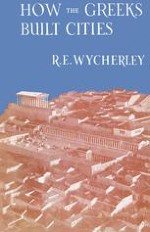1962 | OriginalPaper | Buchkapitel
Fortifications
verfasst von : R. E. Wycherley
Erschienen in: How the Greeks Built Cities
Verlag: Macmillan Education UK
Enthalten in: Professional Book Archive
Aktivieren Sie unsere intelligente Suche, um passende Fachinhalte oder Patente zu finden.
Wählen Sie Textabschnitte aus um mit Künstlicher Intelligenz passenden Patente zu finden. powered by
Markieren Sie Textabschnitte, um KI-gestützt weitere passende Inhalte zu finden. powered by
ABOUT the acropolis very little needs to be added. It was once the city’s main bulwark, augmented at most by outworks of moderate size extending over the lower ground. In the fully developed city its role was more restricted, and it formed a great redoubt in the city wall, or less commonly an inner keep. The circuit walls were now the city’s great defence, and no pains were spared to make them impregnable; they were no mere first line; with them the city stood or fell. When this phase was reached, an acropolis could be dispensed with; we hear (e.g. Pausanias viii. 8. 4, 12. 7 — Mantinea) of cities abandoning their primitive site, with its acropolis, for one more convenient. Some later towns such as Priene and Heraclea (Latmos) possessed a sort of acropolis almost by accident — an outlying piece of high ground taken in by the walls for reasons of strength and not necessarily fortified on the side of the town. New Miletus at first included in its walls the hill on the south which was the nucleus of the old town, but later abandoned it, a cross-wall being built in the lower ground (see fig. 3).
